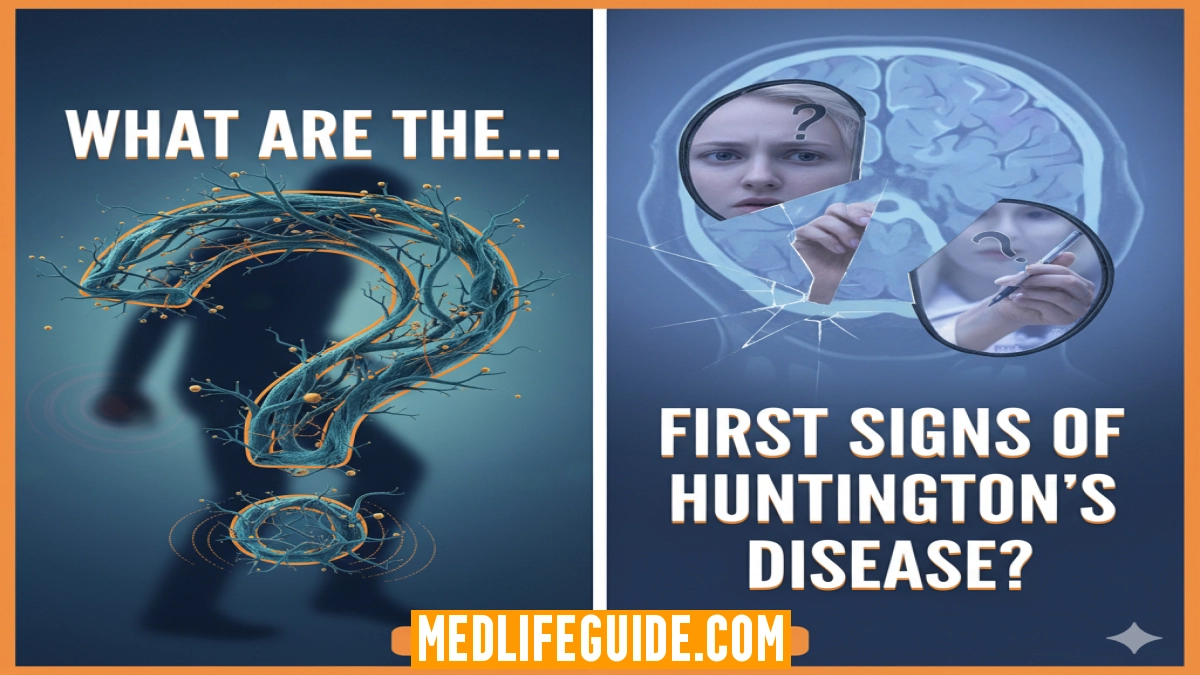Huntington’s disease (HD) is a complex, inherited neurodegenerative disorder that gradually impairs motor skills, cognitive function, and emotional regulation. Despite its profound impact, early detection remains a critical challenge. Recognizing the initial signs can empower individuals and families to seek timely intervention, optimize care, and plan for the future. This article delves deeply into the earliest manifestations of Huntington’s disease, weaving together expert analysis, clinical data, and practical wisdom to provide a nuanced understanding tailored for those invested in physical health and neurological well-being.
Understanding Huntington’s Disease: A Brief Overview
Before exploring the first signs, it’s essential to grasp the nature of Huntington’s disease. HD is caused by a genetic mutation in the HTT gene, leading to abnormal repetition of the CAG trinucleotide sequence. This mutation results in the production of a defective huntingtin protein, which progressively damages brain cells, particularly in the basal ganglia and cerebral cortex.
The disease typically manifests in mid-adulthood, between ages 30 and 50, but juvenile and late-onset cases also occur. Its progression is relentless, affecting movement, cognition, and psychiatric health, ultimately leading to severe disability.
The Importance of Early Recognition
Early identification of Huntington’s disease is not merely academic; it has profound implications for patient care, family planning, and psychological support. Detecting subtle changes before overt symptoms emerge allows for:
- Timely medical intervention: Symptom management and participation in clinical trials.
- Genetic counseling: Informing at-risk family members.
- Psychosocial support: Addressing emotional and mental health needs early.
- Lifestyle adjustments: Implementing strategies to maintain quality of life.
What Are the First Signs? A Multidimensional Perspective
The earliest signs of Huntington’s disease are often subtle and multifaceted, spanning motor, cognitive, and psychiatric domains. These initial symptoms can be easily overlooked or misattributed, underscoring the need for heightened awareness.
1. Subtle Motor Changes
Motor symptoms are hallmark features of HD, but the earliest motor signs are often mild and intermittent. They may include:
- Involuntary movements (chorea): Small, jerky, and irregular movements, often starting in the fingers or face.
- Clumsiness or coordination difficulties: Slight problems with balance, handwriting, or fine motor tasks.
- Muscle rigidity or stiffness: Early muscle tension that may cause discomfort or awkward movements.
- Changes in gait: A subtle alteration in walking pattern, such as a slight shuffle or unsteadiness.
These motor signs may be so mild that they are mistaken for normal aging or stress-related issues.
2. Cognitive Shifts
Cognitive changes in the early stages of HD are often insidious and can precede motor symptoms. Common early cognitive signs include:
- Difficulty with planning and organizing: Challenges in managing daily tasks or multitasking.
- Slowed thinking: A noticeable reduction in processing speed or mental agility.
- Memory lapses: Forgetfulness, especially with recent events or new information.
- Impaired judgment: Difficulty making decisions or solving problems.
These cognitive symptoms reflect the gradual degeneration of brain regions responsible for executive function and memory.
3. Psychiatric and Emotional Symptoms
Psychiatric manifestations are frequently among the first signs and can be the most distressing for patients and families. Early emotional and behavioral changes may include:
- Mood swings: Rapid shifts between irritability, sadness, and anxiety.
- Depression: Persistent feelings of hopelessness or loss of interest.
- Apathy: Reduced motivation or withdrawal from social activities.
- Obsessive-compulsive behaviors: Repetitive thoughts or actions.
- Irritability and aggression: Increased frustration or anger outbursts.
These symptoms often precede motor signs and may be misdiagnosed as primary psychiatric disorders.
Diagnostic Challenges and the Role of Specialist Evaluation
Given the subtlety and overlap of early symptoms with other conditions, diagnosing Huntington’s disease in its initial stages requires a comprehensive approach:
- Detailed clinical history: Including family history of neurological or psychiatric disorders.
- Neurological examination: To detect subtle motor abnormalities.
- Neuropsychological testing: Assessing cognitive and emotional function.
- Genetic testing: Confirmatory diagnosis through identification of the HTT gene mutation.
Early diagnosis is a collaborative process involving neurologists, psychiatrists, genetic counselors, and allied health professionals.
Practical Wisdom: What to Do If You Suspect Early Signs
If you or a loved one notice symptoms suggestive of Huntington’s disease, consider the following steps:
- Seek medical advice promptly: Early consultation with a neurologist can facilitate accurate diagnosis.
- Document symptoms: Keep a detailed record of changes in movement, cognition, and mood.
- Explore genetic counseling: Understanding inheritance patterns can inform family planning.
- Engage support networks: Connect with patient advocacy groups and mental health resources.
- Adopt healthy lifestyle habits: Regular exercise, balanced nutrition, and cognitive stimulation may help maintain function.
Emerging Research and Future Directions
The landscape of Huntington’s disease research is rapidly evolving. Advances in biomarkers, neuroimaging, and gene-silencing therapies hold promise for earlier detection and disease-modifying treatments. Staying informed about clinical trials and novel interventions can empower patients and caregivers.
Summary: Key Takeaways on Early Huntington’s Disease Signs
- Early signs span motor, cognitive, and psychiatric domains.
- Subtle chorea, coordination issues, and gait changes may be initial motor symptoms.
- Cognitive difficulties often involve planning, memory, and processing speed.
- Psychiatric symptoms like mood swings and depression frequently precede motor signs.
- Diagnosis requires multidisciplinary evaluation and genetic confirmation.
- Early recognition enables timely intervention, support, and planning.
Sections Ripe for Augmentation
- Proprietary Data: Incorporate patient-reported symptom onset timelines or clinical case series to illustrate variability.
- Personal Anecdotes: Share narratives from individuals or families navigating early symptoms to humanize the experience.
- Expert Citations: Include quotes or insights from neurologists specializing in movement disorders or genetic counselors.

